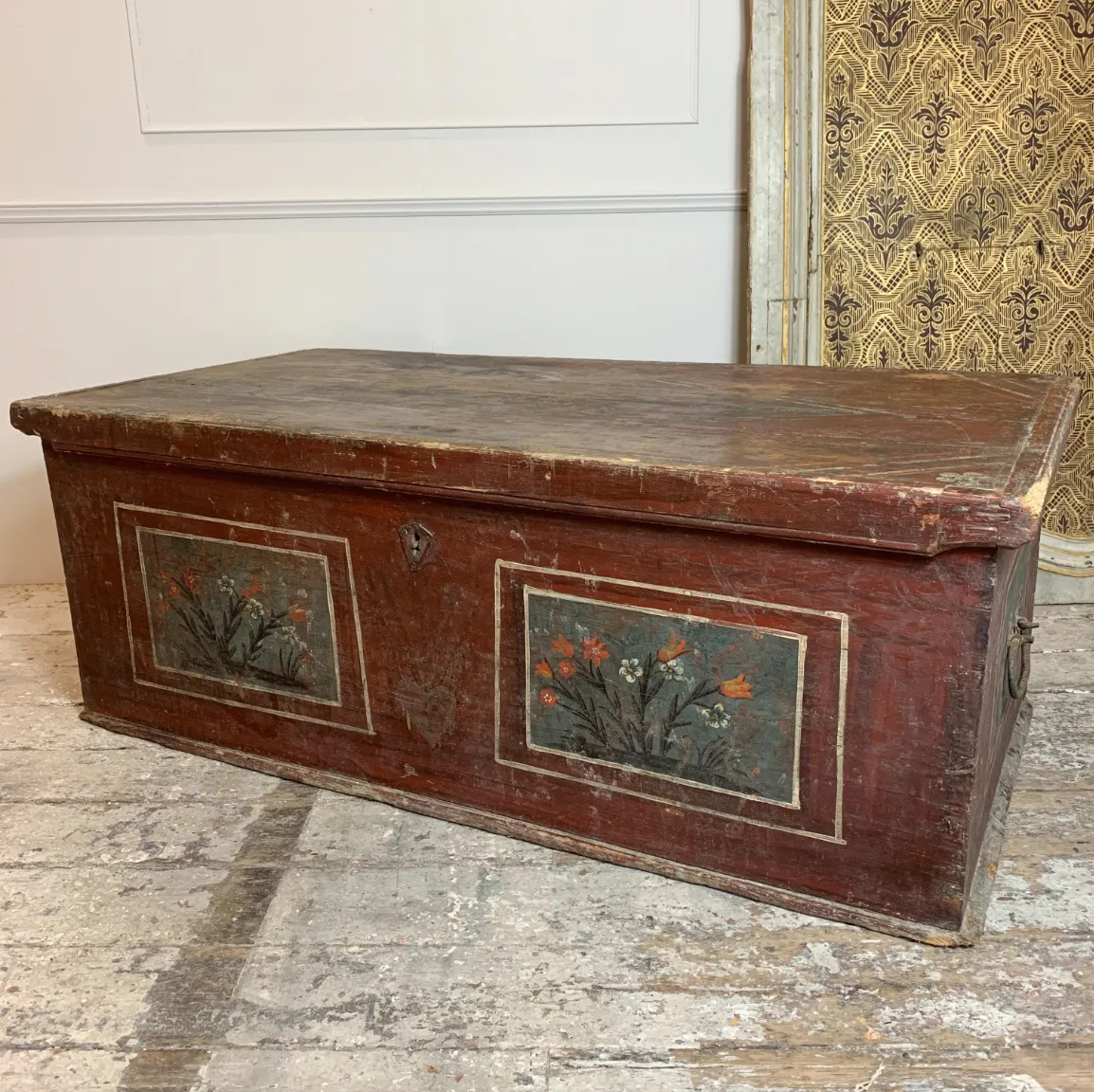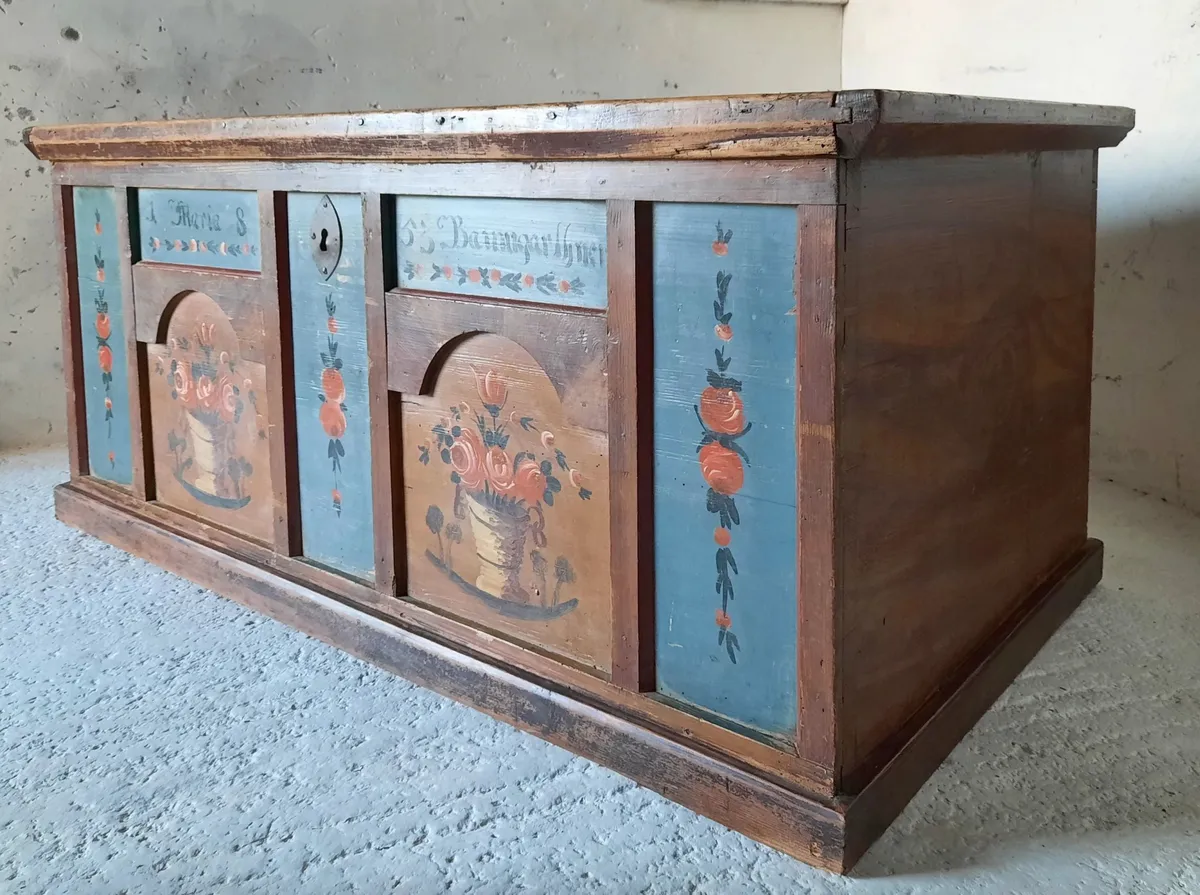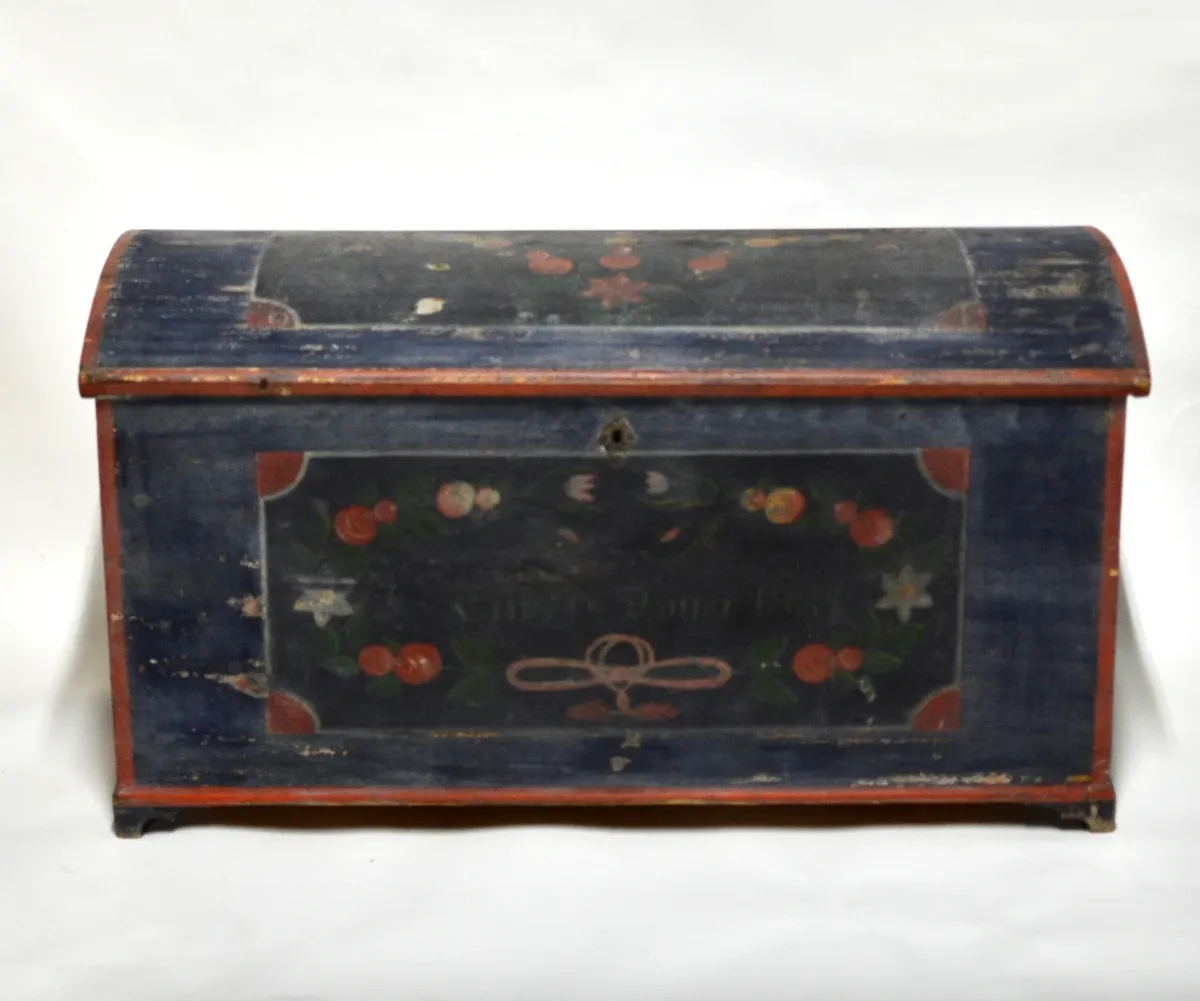In central and eastern Europe, in traditional, religious, countryside communities from the 1600s up until as recently as the 1980s, a hand-painted marriage chest would be commissioned by families as soon as a couple-to-be became engaged.
Nowadays, these exquisite chests are displayed in homes, both as decorative pieces and as rather elegant storage. Here's everything you need to know about antique and vintage marriage chests...
What are marriage chests?
Marriage chests are wooden trunks, presented to a couple on the occasion of their wedding. Traditionally, a marriage chest would be filled with dowry items to treasure for a lifetime such as fine linens, clothing and precious possessions.
What is a cassone marriage chest?
Large decorated marriage chests made in Italy from the 14th to 16th Century are called ‘cassoni’. Along with the marriage bed, they were treasured by wealthy Renaissance households and held textiles and precious clothing. They were often made from walnut or poplar and were sometimes decorated with coats of arms, gilding and wedding scenes. Cassoni were traditionally made in pairs.
What is the difference between a ‘cassone’ and a ‘cassapanca’?
A ‘cassone’ is a large decorated marriage chest which was not used as a seat. A ‘cassapanca’ – which translates as ‘chest-bench’ – was used as a marriage chest and for storage but also as seating. Dating from the Italian Renaissance period, they were often ornately carved.
Where did the hope chest originate?
Waves of European immigrants from Germany and Scandinavia brought the tradition of painted chests to America. Young unmarried American women collected dowry linen, clothing and household items together in a ‘hope chest’ (also sometimes called a ‘cedar chest’) before their wedding day, which would then move with them to their new home after marriage. This is the equivalent of an Australian ‘glory box’ or the UK concept of filling your ‘bottom drawer’ in preparation for your wedding day.
Why is it called a hope chest?
The young unmarried woman would fill her chest with items for her future married life and it came to symbolise her hopes for a happy family.
Where to buy a marriage chest
Late 18th Century European Hand Painted Marriage Chest
- Buy it now from 1st Dibs (£1,080)

Size:155 cm x 75 cm x 56 cm
Material: Wood
Location: Hastings, UK
Price: £1,080
Originating from Europe in the mid-18th century, this marriage chest is made from a beautiful deep red wood, decorated with a hand-painted floral design. Inside, a main storage section takes up the majority of the space, with a small shelf with a lid at one side. True to the nature of antiques, the wear on the chest helps to tell its story, and the heavy iron handles are original to the chest.
Large Circa 1853 Austrian Marriage Chest With 5 Internal Drawers
- Buy it now from Vinterior (£800)

Size: 142.24 cm x 66.04 cm x 78.74 cm
Material: Elm and Pine
Location: Valley, UK
Price:£800
Larger than most marriage chests, this antique offering, dated to 1853, is decorated with a distinct floral design, as well as the addition of scripture in two of the upper panels. Due to its size and intricacy, this marriage chest, originally from Austria, would have been made for a wealthy family. Inside the chest there are five decent size drawers and a candle box.
19th Century Swedish Marriage Chest
- Buy it now from Etsy (£875)

Size: 107 cm x 59 cm x 51 cm
Material: Wood
Location: UK
Price:£875
A charming 19th-century marriage chest originating from Sweden, this is a lovely example of a chest almost completely painted. The date 1884 is painted on the front, as well as other hand-drawn decorations. Inside the chest, an original abstract drawing is still present, as is the candle box.
